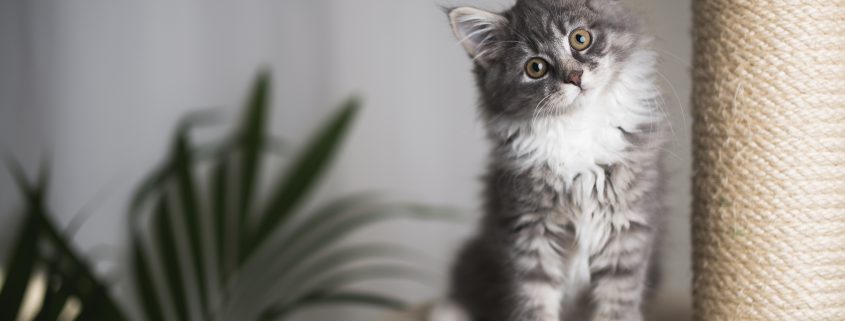Cats communicate with humans in so many ways but the one way that almost always gets our attention is the meow. Sure, your cat may not speak English, but they definitely know how to communicate. Of course, there are other vocalizations cats make that are usually quite easy to interpret such as the growl or hiss, and it’s up to you as an owner to learn how to interpret your feline’s various sounds.
In this blog, we cover the meaning of your cat’s meow. Once you’re done reading you’ll know when they’re hungry, want to play, or need to be left alone.
Types of Vocalizations
The key to understanding what your cat is trying to tell you is to notice the differences between vocalizations. In addition, a cat’s meow is specific to your relationship with them and the learned behaviors they’ve picked up from interacting with you. However, there are generalizations we can make about the meaning of different meows. Here are 8 of the most common cat vocalizations and what they typically mean:
- Meow: Domestic cats understand that this is a good way to get the attention of their people. This complex call is generally associated with greetings or care-seeking events such as “feed me,” “pet me,” “I want a treat,” etc.
- Purr: This is probably the best sound in the world. Generally, the soft rhythmic noise means your cat is happy, content, or loves the attention they are receiving at that moment.
- Hiss: This warning vocalization that translates into “I’m warning you,” or “I’m scared.” Your cat is letting you know they are uncomfortable with something, or they feel like they’re being threatened.
- Growl: This means “back off” or “stop what you are doing.” This is often your last warning before you’re met with claws and teeth. If a cat growls, they’re angry and likely to fight if pushed to that point.
- Trill: This sweet, high-pitched sound translates to “I’m so glad to see you” or “gimme some attention.” If your cat makes this noise, it’s a sign that they’re happy to see you and looking for a small token of attention in return. So, give them a few scratches or a quick pet to acknowledge their greeting.
- Chatter: The chattering of their teeth is usually associated with hunting, often seen when a cat sees prey but can’t get to it — such as looking at a bird or squirrel out a window, or a fly buzzing around inside the house.
- Yowl: This high-pitched meow is typically used to voice pain. Cats tend to hide their pain and discomfort, but one of the primary indicators is when they vocalize excessively. A sudden high-pitched outburst from your cat could mean they’re injured or experiencing extreme discomfort so check them over for any physical signs that something might be wrong. Don’t hesitate to call your veterinarian if you’re concerned.
- Caterwaul: This is a specific meow that intact female cats produce when they’re in heat and looking for a mate. It’s a deep sound that crosses a yowl with a whine, and it’s distinctive enough that you’ll know immediately when you hear it. If your female cat hasn’t been spayed, expect to hear caterwauling when she is in heat.
Your Pets are our Priority!
At the National Animal Supplement Council, our top priority is to promote the health and well-being of your pets. That’s why we created the NASC Audit Program and the Quality Seal: to help you identify animal health and nutritional supplements from responsible suppliers committed to producing the highest quality, most consistent products on the market. Visit our website to learn more and see a list of companies and brands awarded the NASC Quality Seal.


